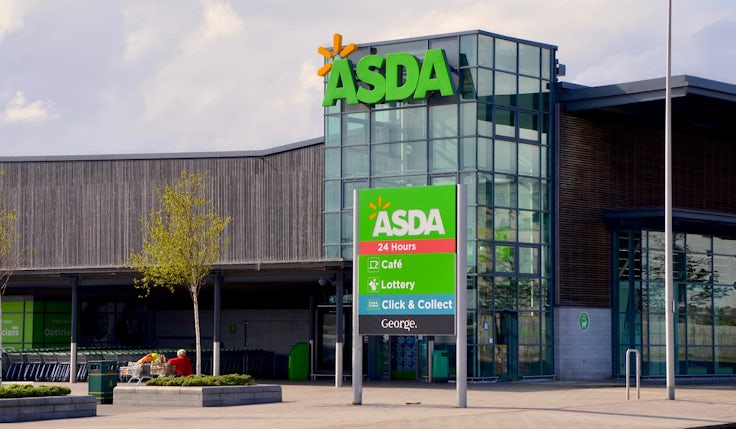SME marketing plans, grocery price inflation, wellbeing claims: 5 interesting stats to start your week
We arm you with all the numbers you need to tackle the week ahead.
Around two in three small businesses have no marketing plan
Around two-thirds (67%) of SMEs have no marketing action plan, with more than half (54%) not even having a business plan.
Only 27% set clear objectives when using specialist marketing services such as agencies, while just over two-fifths (41%) measure the profitability of their customers.
The research also suggests that marketers do not believe the agencies they work with are providing good value for money. Of the 44% of businesses that are working with specialist marketing services agencies, 62% believe they are providing good value for money.
The research also ranks the marketing maturity of various sectors, based on their responses to the survey. It finds the marketing and advertising, apparel, packaging, and financial services industries are furthest ahead in marketing maturity.
On the other hand, the automotive and transport sector is rated as the least mature in their marketing journeys. Just 44% of respondents in that industry agree their business has a clear brand proposition.
Source: The Marketing Centre
Grocery price inflation rate slows
 The rate of grocery price inflation fell by 0.1 percentage points last month. In January, grocery price inflation was 6.8%, down from 6.9% in December 2023.
The rate of grocery price inflation fell by 0.1 percentage points last month. In January, grocery price inflation was 6.8%, down from 6.9% in December 2023.
By comparison, between November and December 2023, grocery price inflation saw a 2.2 percentage point decrease.
Lidl was the fastest-growing grocer in the UK for the fifth month in a row in January. Its sales grew by 11.9% year-on-year, making it the only supermarket to see double-digit growth in the period. Sainsbury’s was the next fastest-growing retailer, with its sales increasing by 8.1%.
Lidl, Tesco, Sainsbury’s and Aldi all made market share gains. Morrisons saw its market share decrease year-over-year, from 9.1% in January 2023 to 8.8% in January 2024. Asda’s market share also declined from 14.2% to 13.7%.
Source: Kantar
Most UK adults agree wellbeing claims have become a ‘marketing gimmick’
 Over half (55%) of UK adults believe wellbeing claims have become a “marketing gimmick”, suggesting that brands need to be careful about how they tread when tapping into trends in the area.
Over half (55%) of UK adults believe wellbeing claims have become a “marketing gimmick”, suggesting that brands need to be careful about how they tread when tapping into trends in the area.
Over two-fifths (42%) of consumers also find the amount of wellbeing advice available overwhelming.
There is a lack of understanding of jargon in the sector among consumers, only around one in five (21%) British consumers understand terms such as ‘gut-brain connection’, while just under a quarter (24%) understand ‘Circadian rhythms’.
However, brands shouldn’t be completely deterred by a lack of understanding and some scepticism in the wellness area, with the data suggesting there still is potential to reach consumers.
Over half of consumers (56%) agree beauty and personal care routines can help boost mood and 52% think vitamins and supplements can improve mental wellbeing.
Source: Mintel
Retail footfall remains on a downward trajectory
 It’s a case of new year, same story for British retail footfall, with it continuing its pattern of decline in January.
It’s a case of new year, same story for British retail footfall, with it continuing its pattern of decline in January.
According to statistics from the British Retail Consortium and Sensormatic IQ, total UK retail footfall decreased by 2.8% year-over-year in January, up from a decline of 5% in December.
Retail traffic in shopping centres saw the biggest drop, falling by 5.0% in January. High street footfall decreased by 2.3% in January versus the year before, while retail parks saw footfall drop by 1.8%.
“Footfall remained on a downward trajectory in January, albeit at a slower rate than in December,” says BRC chief executive Helen Dickinson.
“Many consumers appear particularly bargain-focused, with the first half of the month boosted by the January sales. However, the latter part of January saw fewer shoppers out as stormy weather led to a bigger footfall decline in shopping centres and high streets.”
Source: BRC-SensormaticIQ
Over 45s are TikTok’s fastest-growing user group
 Despite TikTok having a reputation for being the platform of Gen Z, users over 45 are the fastest-growing age group on the platform.
Despite TikTok having a reputation for being the platform of Gen Z, users over 45 are the fastest-growing age group on the platform.
Almost one quarter (23%) of TikTok’s user base are over 45. That represents an increase of seven percentage points versus 2022. Almost three in 10 (29%) of the short-form video platform’s users are aged 16 to 24, while 27% are aged between 25 and 34.
The research from Kantar Media also finds that wealthier TikTok users are more engaged with brands and influencers than the average user. Over half (52%) of the most affluent TikTok users like and follow brands or products, compared to 37% of all TikTok users.
The data also suggests that users on Snapchat may be more engaged with brands than those on any other platform. Snapchat users are 54% more likely than the average social media user to like and, or follow brands and celebrities.
Source: Kantar Media








